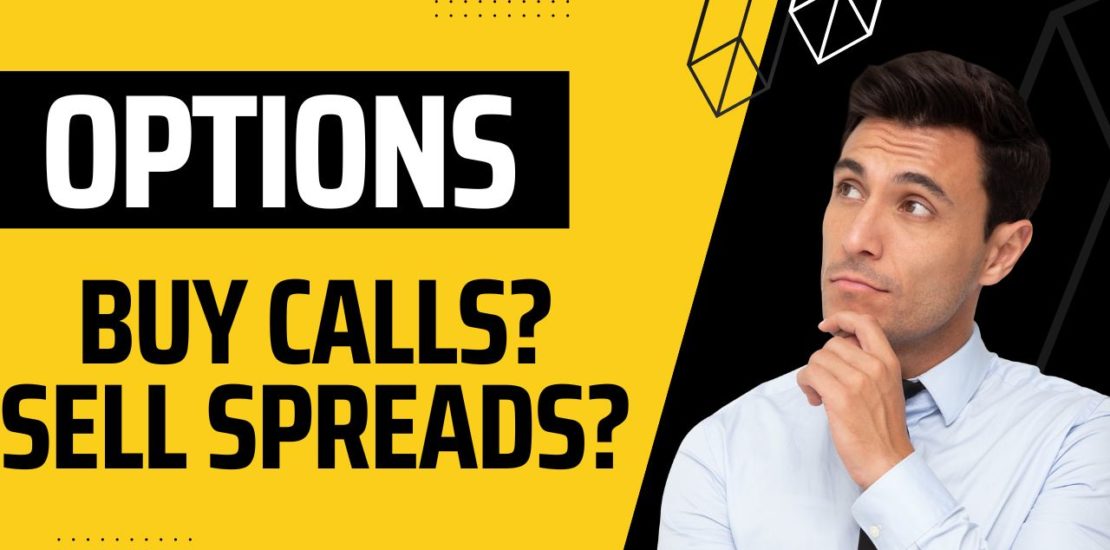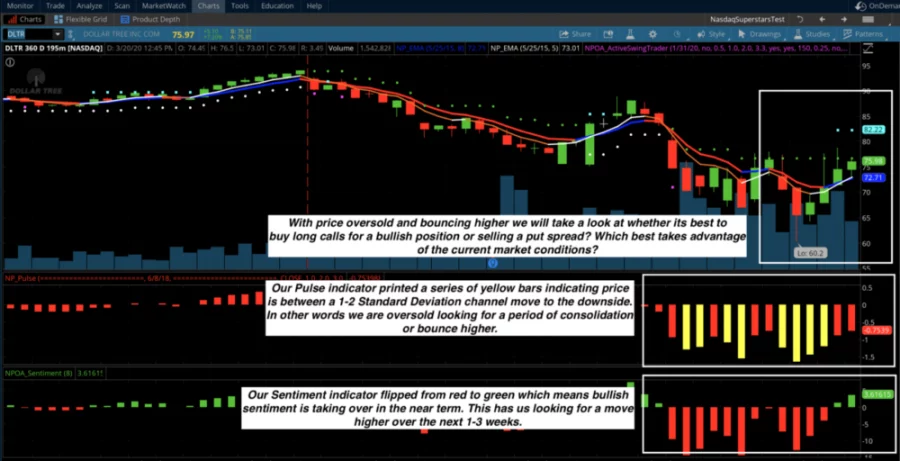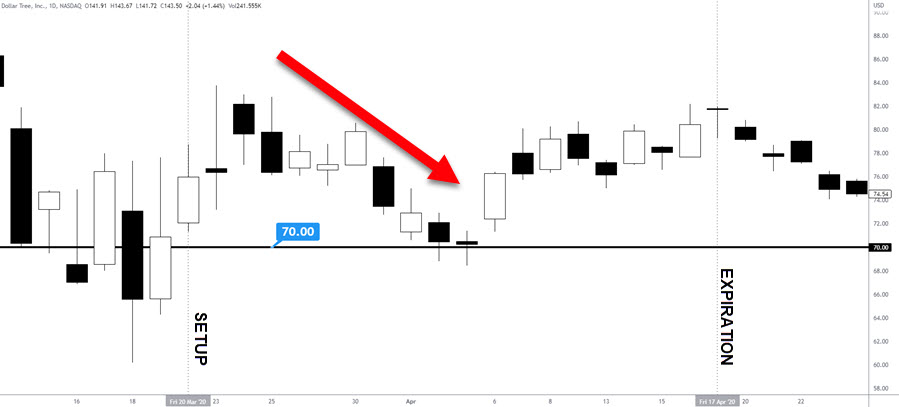- November 3, 2022
- Posted by: Shane Daly
- Category: Trading Article

You’ve just found a great stock that you are bullish on and you give yourself two choices. “Should buy call options or sell a put spread”?
Both have their pros and cons, so it’s tough to decide. Does one of these trades have an advantage over the other? Here’s a quick rundown of each option so you can make an informed decision.
What Does Buying A Call Option Mean?
A call option is a bullish options contract that gives you the right, but not the obligation, to buy 100 shares of an underlying security at a certain price (the strike price) within a certain time frame (until expiration).
Buying calls is a purely directional play where we need the stock to rise and do it quickly. If the market is moving well, you can profit quickly and the profit potential is high. It is an aggressive trade because the moment you put the trade on, time decay (THETA) is not in your favor. If volatility dries up, time decay ticks away, and may end up holding a worthless contract.
With a high risk/reward, this trade is excellent for the more aggressive options trader who accepts the risk.
Selling Put Spreads
Selling put spreads is an options strategy that involves purchasing one put option while simultaneously selling another put option with a higher strike price.
The idea behind a put spread is to limit your downside risk while still allowing for profits if the underlying security falls in value as long as the stock price stays above the strike we sold. This is a conservative approach with limited upside potential but allows you to profit 5 different ways.
Put spreads are also cheaper to put on, and have a lower risk/reward profile but a trader can profit if the underlying stock: Goes up, down, or sideways, with time decay and lower volatility.
Trade Example
This past trade is an excellent example of deciding which option choice is the better one.
Here is a chart of DLTR where we saw an oversold stock that was starting an upside bounce. We were slightly bullish on this trade given the overall market condition. Our time horizon for this bias was a little over two weeks.

The first choice was buying a call option where we looked for an expiration date 26 days out.
We wanted to buy the April 70 calls for $9.00 or better and on Friday, they were trading at $8.80.
The profit/loss breakdown would be to target a 100% return on this trade while risking 50% of what we paid ($440.00). Also, you also need the stock to rally above $78.80 in order to find breakeven on the trade (Strike price + premium paid).
Our other choice was selling a put spread using the same expiration of 26 days out. We wanted to sell the April monthly 70/65 put spread for $1.50 or higher. This means we would sell the 70 puts and buy the 65 puts at the same time for $1.50 or higher.
At the close on Friday, this spread was trading for $2.22. If I got filled at this price, the max profit I can make on this trade is $222.00 and my risk is $278.00. My breakeven price on this trade is $67.78 ($70 strike – premium collected $2.22).
Yes, we give up the homerun potential but it’s a decent trade-off for a cheaper trade and multiple ways to profit. We wanted to close the spread when we could buy it back and keep between 50-75% of what we collected to open the trade.
Here is the stock chart of DLTR from that period.

After the trade was put on, time decay started working against a call buyer as price retraced to $70.00. For the put spread, as long as the stock stayed above our breakeven price, we were fine in holding. In the end, if you exercised your call option and bought the stock at your strike of $70.00 and then sold it close to expiration, you’d of made money. Most people however do not exercise and simply sell to close their trade.
Those that sold put spreads would have benefited from time decay, the sideways range, and the move up in price. This trade could close for the max profit however at Netpicks, we prefer to keep 50-75% of the premium we received when opening the trade.
As you can see, the put spread was cheaper to put on and there was less risk involved which is what you want as a trader
Which One Is Better?
That answer depends on the trader. For many, the immediate decline in price would have been painful to sit through if holding a long call. The sideways range, although in the money, could have also challenged the trader who was expecting a large move up in price.
For put spread holders, this was a relaxed trade since we know we were making profit during the decline, the sideways range, and the rise near expiration.
What do we generally prefer?
Mike, our resident options instructor generally prefers put spreads:
Put spreads limit your downside risk while still allowing for profits if the underlying security falls in value, as long as the stock price stays above the strike you sold.
Put spreads are cheaper to put on, and have a lower risk/reward profile than buying a call option.
A trader can profit from a put spread if the underlying stock goes up, down, or sideways, with time decay and lower volatility.
Put spreads can be closed when you buy back the spread and keep between 50-75% of what you collected to open the trade
Your Free Guide
You don’t need to have tens of thousands of dollars to start trading options.
With One Day Options Trading Strategy, you can make money whether the stock market goes up, down, and even sideways.
Check out our free Options guide called 8 Minute Options Cookbook to learn more
2 Comments
Comments are closed.

Thank you for this nice and simple lesson. It’s never to late to learn.
Just started taking this seriously and I’m trying to learn and improve everyday 0